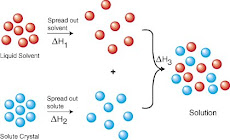SC Johnson Starts Listing Product Ingredients Publicly
By GreenBiz Staff, GreenBizPublished March 13, 2009
RACINE, Wis. -- SC Johnson has started listing all of the ingredients in products on a new website, and is also making the ingredient lists public on product labels and through a consumer hotline. The ingredient website, http://www.whatsinsidescjohnson.com/, launched this week and so far includes ingredient lists for Nature's Source cleaners, Windex outdoor spray, Shout wipes and Glade candles and sprays. The company will continue to add products over the next three years, aiming to have all ingredients for air care and home cleaning products public by January 2012.SC Johnson is listing not only the product ingredients, but providing explanations of what the ingredients do. The company is also taking ingredient listing a step further than other companies by pledging to list details of preservatives, dyes and fragrances. Although, in order to protect proprietary details, SC Johnson will list all ingredients that could potentially be in fragrances.The company's ingredient listing is an outgrowth of a voluntary industry initiative to list ingredients online, on product labels, via toll-free numbers or other non-electronic means.It also comes just weeks after public interest law firm Earthjustice filed a lawsuit against cleaning product makers Procter & Gamble, Colgate-Palmolive, Church & Dwight Co. and Reckitt Benckiser Group for not complying with a New York law that requires companies selling cleaning products in the state to file reports listing the chemicals in products.Earthjustice says it did not include SC Johnson in that lawsuit because when Earthjustice informed SC Johnson it was not following the law, the company began speaking with Earthjustice and other groups about what it could do to come into compliance.SC Johnson's ingredient website will provide listings in both English and Spanish, with the Spanish listing to be added later this year. SC Johnson Canada will start listing ingredients next year in English and French.SC Johnson is also working to phase phthalates out of its products, an initiative it started last summer, when it began talks with suppliers on how to remove the phthalate DEP from fragrances. Some new and reformulated products are already being produced without phthalates.
sábado, 18 de abril de 2009
INITIATIVES TO HELP DECIDE WHAT SAFER PRODUCT TO BUY
EPA AND ANIMAL TESTINGS
EPA Moving Away from Animal Testing to Assess Chemical Toxicity Risk
By GreenBiz Staff, GreenBizPublished March 25, 2009
WASHINGTON, D.C. -- The U.S. Environmental Protection Agency is reducing its reliance on animal testing to assess human risk of chemical toxicity and will instead focus more heavily on the tools made possible by advances in molecular biology, genomics and computational modeling.The move is part of the EPA's effort to find better, cheaper and faster ways to screen thousands of chemicals for human risk, including the ways in which toxicity occurs, the impact of long-term exposure to various chemicals, and how chemicals effect genetic variations of the population. "Right now, there isn't enough capacity to test all the chemicals we want information on," Robert Kavlock, director of EPA's computational toxicology program, told GreenBiz.com Wednesday.The agency asked its various departments about high-priority chemicals for which they'd most want information. After compiling the list of nearly 10,000 chemicals and consulting the public literature, the EPA discovered it didn't know whether two-thirds of the chemicals on this list caused cancer in animals; for 90 percent of the chemicals, it didn't know their effects on reproduction. The "U.S. Environmental Protection Agency's Strategic Plan for Evaluating the Toxicity of Chemicals," (PDF) released today, will also enable the agency to study how toxicity impacts children. It expects the new approach will yield significant savings. For example, companies may have to pay upwards of a half-million dollars to perform an endocrine disruption screening on individual chemicals, as may be required by the end of the year for chemicals that include food use pesticides, but the new approach may trim the cost to about $20,000."For people who are developing green chemistry, this may allow them to look for an alternative chemical and profile that chemical for $20,000," Kavlock said, adding the new approach may serve as a way to validate whether one chemical is greener than another.The strategic plan builds upon the findings of a 2007 report from the National Research Council which advocates transforming the way human toxicity risk is determined by focusing on identifying and evaluating toxicity pathways.The EPA will still use animal testing for the foreseeable future, but in smarter ways, Kavlock said. "For a long time there will be a need for animal testing," he said. "They've served their purpose well. The only way we can study some things is in animals." Kavlock expects the testing strategy to be fully deployed within 10 years but believes useful applications will be released within two years.
jueves, 9 de abril de 2009
EPA and Green Disinfectants
EPA to Allow Green Claims for Disinfectants & Sanitizers
According to ISSA, U.S. Environmental Protection Agency (EPA) officials have stated they will recommend the adoption of a policy that allows suppliers to make valid claims of environmental preferability in relation to the marketing of disinfectants and sanitizers. This statement represents a significant departure from the agency’s well-entrenched policy that prohibits “green” claims to be made in conjunction with the promotion of any EPA-registered product, including antimicrobial pesticides.
Specifically, EPA officials are expected to recommend that the agency allow suppliers to make factual claims of environmental preferability in conjunction with disinfectants and sanitizers, according to Marty Monell of the EPA's Office of Pesticide Programs. In addition, Ms. Monell stated that she will also recommend that a policy be established that would allow the use of ecolabels in conjunction with the marketing of hard-surface antimicrobial products. In this regard, it is expected that the latter policy would be conducted in cooperation with the EPA Design for the Environment Formulator Program (DfE).
“I am very pleased to see this development from EPA that will make it easier for green consumers and manufacturers to clearly identify greener disinfectants, which in turn will help eliminate confusion in the marketplace and accelerate green cleaning in critical segments such as health care, schools, and others with vulnerable populations,” said Stephen Ashkin, president, The Ashkin Group.
While the process is not yet complete, EPA will make the recommendations on green claims at the April 22-23 meeting of EPA’s Pesticide Policy Dialogue Committee. The green-claim policy recommendations are based on the work product of the EPA Working Group on Comparative Claims upon which sit Ashkin and Bill Balek, director of legislative affairs, ISSA.
“This latest development by EPA is another indication of the growing maturity of green cleaning, and the increasing availability of environmentally preferable products that also meet the most stringent performance, and health and safety requirements,” said Balek.
In the meantime, EPA and DfE will continue to conduct the internal pilot which is designed to identify the parameters under which the DfE ecolabel could be conferred upon certain disinfectants and sanitizers. Once the internal pilot is completed, it is expected that EPA will conduct an external pilot that presumably would open the process up to manufacturers and distributors.
Vistas de página en total
GREEN CHEMICALS
Also the materials have to meet with toxicity and health requirements regarding inhalation, dermal and eye contact. There is also a specific list of materials that are prohibited or restricted from formulations, like ozone-depleting compounds and alkylphenol ethoxylates amongst others. Please go to http://www.greenseal.com/ for complete information on their requirements.
For information on current issues regarding green chemicals, see the blog from the Journalist Doris De Guzman, in the ICIS at: http://www.icis.com/blogs/green-chemicals/.
Certification is an important — and confusing — aspect of green cleaning. Third-party certification is available for products that meet standards set by Green Seal, EcoLogo, Energy Star, the Carpet & Rug Institute and others.
Manufacturers can also hire independent labs to determine whether a product is environmentally preferable and then place the manufacturer’s own eco-logo on the product; this is called self-certification. Finally, some manufacturers label a product with words like “sustainable,” “green,” or “earth friendly” without any third-party verification.
“The fact that there is not a single authoritative standard to go by adds to the confusion,” says Steven L. Mack M.Ed., director of buildings and grounds service for Ohio University, Athens, Ohio.
In www.happi.com of June 2008 edition, there is a report of Natural formulating markets that also emphasises the fact that registration of "green formulas" is very confused at present, due to lack of direction and unification of criteria and that some governmental instittion (in my opinion the EPA) should take part in this very important issue.










































